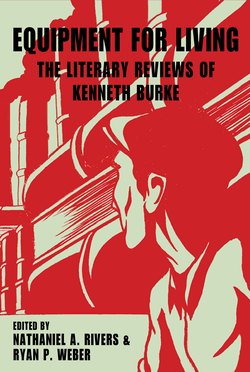Читать книгу Equipment for Living - Kenneth Burke - Страница 11
На сайте Литреса книга снята с продажи.
ОглавлениеReturn After Flight
Theory of Flight by Muriel Rukeyser. Foreword by Stephen Vincent Benet. Yale UP
The New Masses, February 1936, 26
If one would find corroboration for the thesis that even the most practical of acts may have symbolic features, one should certainly examine this interesting volume of poems by Murial Rukeyser. The formal poet might make a poem of airplane flight, in which by his choice of imagery he conveyed the emotional overtones the act of airplane flight had for him. Or the practical mechanic might write of flying, purely by way of contributing to the data of aeronautics. But in Murial Rukeyser we find a clear convergence of the two. She made a practical study of the subject; and at the same time she felt the symbolic aspects of her interest.
The result is a work that can awaken, in the sympathetic reader, a profound responsiveness.
And the record of her experience, though told in a concatenation of isolated poems, is very close to the heart of drama. We get first a kind of long preamble, a collection under the general head, “Poem Out of Childhood.” It shows, as it were, her “preparation,” the quality of experience that made the thought of flying be the appropriate answer to her moods. It is only in the dramatic sense that we could call them poems of “childhood” as regards the section following, the “Theory of Flight” proper.
As we read through this second section, we begin to see emerging the modes of this strange initiation rite she has imposed upon herself. From a distance, she surveys the cruelty and arduousness of the contemporary world. At once aloof and observant, she comes upon an attitude that duplicates, in her own immediate terms, the educative passing of Dante through hell. And quite in keeping with the materials of thought uppermost today, it is the airplane motor that takes over the protective role of Virgil as her guide.
Thus, as we begin to feel stirred when we observe the import of the verses that close the purgatorial journey. “Flight is intolerable contradiction,” she says—the very choice of the word “contradiction” giving us some clue as to the remade nature of her mind. “We bear the bursting seeds of our return.” And she concludes, in lines that, while good in themselves, become magnificent in their context:
Now we can look at our subtle jointures, study our hands, the tools are assembled, the maps unrolled, propellers spun, do we say all is in readiness:
the times approach, here is the signal shock:?
Master in the plane shouts “Contact”:
master on the ground: “Contact!”
he looks up: “Now?” whispering “Now.”
“Yes,” she says. “Do.”
Say yes, people.
Say yes.
YES.
For what has she thus symbolically prepared herself? We learn in the last poem of the book, “The Blood is Justified.”
The range of relevant material she handles, in making this work an experience involving the entire personality and not merely a schematically “before and after” object lesson for schoolboys, is imposing in its richness. She remains competent and composed, even in the dangerous regions of magic: blood, fire, the pit, the father, the owning of names, ritual, the abyss-motif of perspective, the “going round and around” in the swing-music of the gyroscope, the upper and nether spheres, the mounting of stairs—all these secret ingredients are called upon, along with an affectionateness that evokes our confidence.
In having such a writer on their side, Communists have a worthy ally.
